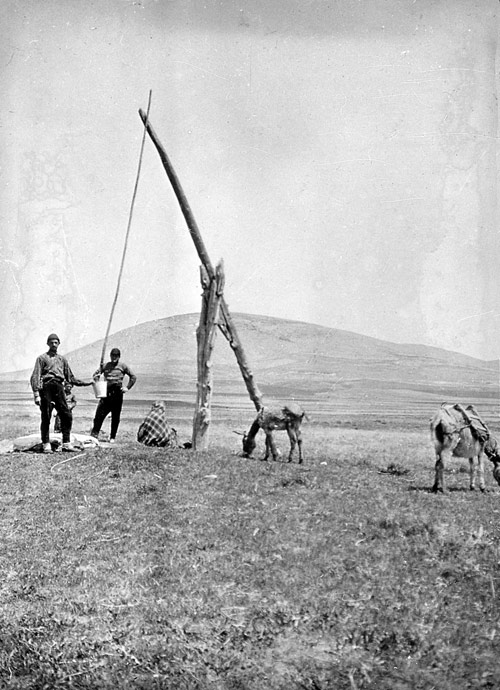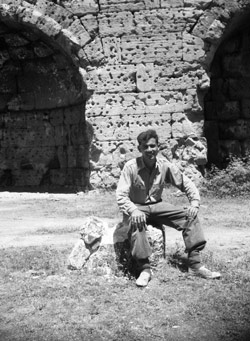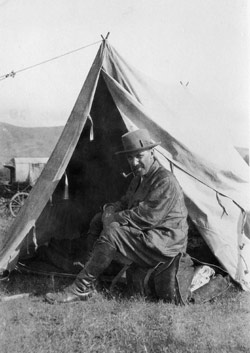The MAMA XI Project
The aim of the original MAMA project (1925-1962) was ‘to make available facsimile records of monuments, mostly of the Roman and Early Byzantine periods, surviving above the surface of the soil in a number of selected areas’, with a particular emphasis on central and southern Asia Minor (Phrygia, eastern Karia, Lykaonia, and Kilikia). Eight volumes were published in the original Monumenta Asiae Minoris Antiqua series (I-VIII, 1928-1962); two further volumes were published by Stephen Mitchell and Barbara Levick as MAMA IX (1988) and X (1993) from the Nachlass of Sir Christopher Cox, collected for the MAMA project during expeditions in Asia Minor in 1925-6 (http://www.csad.ox.ac.uk/MAMA/index.html).

Well-head (shaduf) in eastern Phrygia. Christopher Cox, ?1931.

Michael Ballance at Pamukkale, 1953
The 1954-1957 Calder-Ballance archive is the last part of the material collected under the MAMA aegis still awaiting publication, and is the largest and richest body of new material from inner Anatolia to emerge in the past half-century. Most of the monuments recorded by Calder and Ballance (292 of 387) are otherwise unpublished, and to judge from the fate of ancient monuments elsewhere in inland Anatolia, we may suppose that most have long since been lost or destroyed.
After Michael Ballance’s death in 2006, his collection of papers, notebooks, squeezes and slides from the 1954-1957 expeditions was bequeathed to the Centre for the Study of Ancient Documents in Oxford. The digitisation and web-publication of the archive is one of the most important and innovative aspects of the MAMA XI project. This website, developed by the project team, includes full editions with comprehensive high-resolution photographic illustration of all the monuments in the Calder-Ballance archive. A corpus of the monuments in book-form (Monumenta Asiae Minoris Antiqua XI: Monuments from Phrygia and Lykaonia) is planned for 2014, to be published by the Roman Society in the JRS Monographs series.

William Calder in camp, photographed by Christopher Cox on their first expedition to Phrygia in 1924
In July 2011, an international Colloquium on Phrygia under Roman Rule was held at Wadham College, Oxford, with the aim of exploring the remarkable epigraphic, visual and architectural evidence for the cultural history of inner Anatolia in the Roman and late Roman periods. The papers from this colloquium (Roman Phrygia: Culture and Society, edited by Peter Thonemann) will be published in 2013 by Cambridge University Press in the series Greek Culture in the Roman World.
Go to a description of the website and online corpus
Go to the city and regional introductions
Go directly to the monuments

